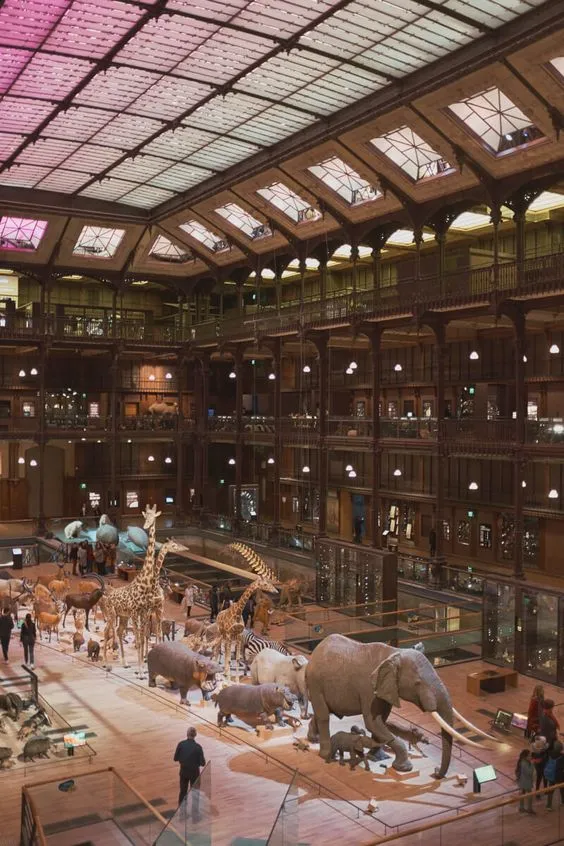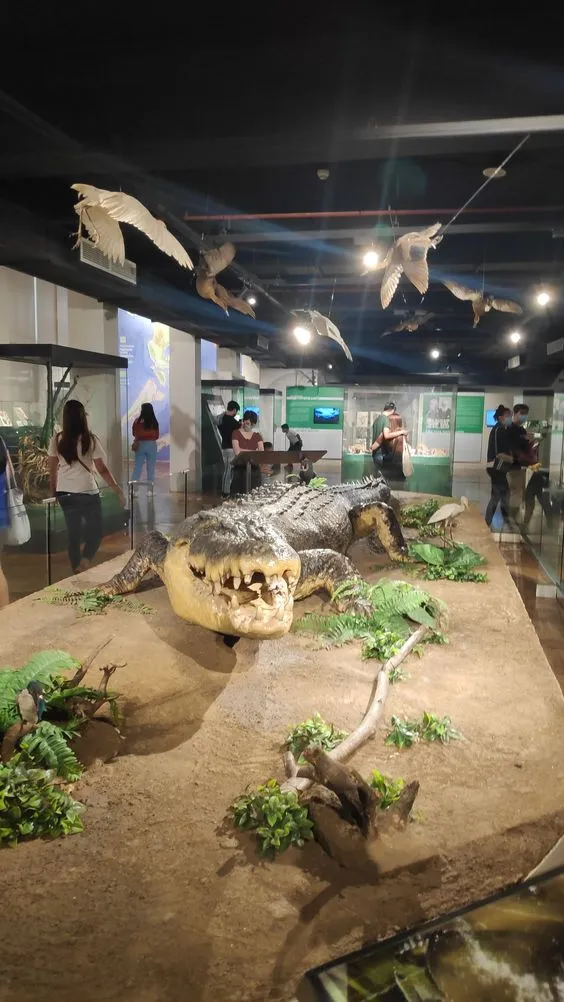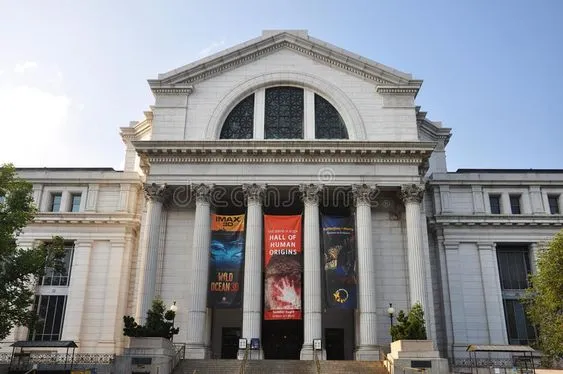Nestled in the heart of Washington, D.C., the National Museum of Natural History (NMNH) stands as one of the world’s most visited and revered institutions. A part of the Smithsonian Institution, this museum is not only an iconic cultural landmark but also a repository of humanity’s accumulated knowledge about the natural world. Each year, millions of visitors from all walks of life come through its doors, eager to explore its vast exhibits and discover the marvels of the planet’s past, present, and future. The National Museum of Natural History has earned a well-deserved reputation as a beacon of scientific exploration and education.
This article delves into the history, exhibits, and the profound impact that the NMNH has on science, education, and the broader public. It celebrates the museum’s role as a gateway to understanding the intricate and beautiful tapestry of life on Earth.
A Rich Legacy: The Origins and Growth of the National Museum of Natural History

The origins of the NMNH date back to 1846, when the Smithsonian Institution was founded by British scientist James Smithson’s generous bequest to the United States. His vision was to create “an establishment for the increase and diffusion of knowledge.” The museum officially opened in 1910, with its iconic Beaux-Arts style building becoming an architectural gem in the nation’s capital.
As science and discovery advanced, so did the museum’s collection, steadily growing into one of the most extensive and diverse natural history collections in the world. Today, the NMNH houses over 146 million specimens, including fossils, minerals, animals, plants, and human cultural artifacts. With these treasures, the museum provides a comprehensive view of life on Earth, its rich history, and the complex processes that shape our planet and its inhabitants.
The museum also plays an instrumental role in scientific research, with a team of leading scientists dedicated to exploring the mysteries of our world. From paleontology to anthropology, the museum’s research initiatives have contributed to countless groundbreaking discoveries that have expanded our understanding of life, the environment, and humanity’s place within it.
Engaging Exhibits: Windows into Earth’s History and Biodiversity
What makes the National Museum of Natural History truly extraordinary is its ability to captivate visitors with a range of exhibits that span millions of years. Whether it’s exploring the age of the dinosaurs or learning about human evolution, the museum offers a dynamic, immersive experience that speaks to people of all ages and interests.
The Fossil Hall: Journey into Deep Time
One of the museum’s crown jewels is the “David H. Koch Hall of Fossils – Deep Time.” This exhibit takes visitors on a journey that spans 4.6 billion years of Earth’s history. Here, visitors can come face-to-face with the museum’s famous T. rex, a towering predator that has fascinated scientists and the public alike. Alongside this magnificent creature are fossils of other iconic dinosaurs, like Triceratops and Stegosaurus, as well as marine reptiles, early mammals, and even prehistoric plants.
But the exhibit is more than just a collection of fossils. It tells a compelling story of life’s evolution, extinction events, and the environmental changes that have shaped the planet. “Deep Time” places humanity within this vast context, helping visitors understand how the distant past has influenced the present and what it means for the future. It prompts critical thinking about current issues like climate change and biodiversity loss, providing a framework for understanding the interconnectedness of life and our responsibility as stewards of the Earth.
The Hall of Mammals: Celebrating Earth’s Diversity
Another highlight of the NMNH is the Hall of Mammals. This vibrant exhibit showcases the incredible diversity of mammals, both living and extinct. From the tiny shrew to the massive blue whale, the exhibit highlights the adaptability and evolution of these warm-blooded creatures.
The Hall of Mammals is particularly engaging for children, with its lifelike dioramas that recreate various ecosystems around the world. Visitors can observe animals in their natural habitats and learn about their behaviors, diets, and evolutionary traits. The exhibit emphasizes the concept of adaptation, explaining how animals have evolved over millions of years to survive in different environments.
What makes this exhibit especially meaningful is its emphasis on conservation. It sheds light on the current threats facing many mammal species, from habitat loss to poaching, and underscores the importance of preserving biodiversity for future generations.
The Hall of Human Origins: Unveiling Our Shared Ancestry
One of the most thought-provoking exhibits at the National Museum of Natural History is the Hall of Human Origins. This exhibit provides a fascinating look into the story of human evolution, tracing our lineage over millions of years and highlighting the key moments that led to the emergence of Homo sapiens.
Here, visitors can see reconstructions of early human species, learn about the tools and technologies they developed, and understand how humans adapted to diverse environments. The Hall of Human Origins doesn’t just focus on physical evolution but also on the development of complex behaviors, such as art, communication, and social structures.
The exhibit addresses many of the big questions about what it means to be human: Where did we come from? How did we evolve? What makes us different from other species? These questions are explored with an emphasis on scientific evidence, including fossil records, DNA analysis, and archaeological findings.
Perhaps one of the most impactful aspects of this exhibit is its ability to foster a sense of global unity. It reminds us that despite our differences, all humans share a common ancestry and have a responsibility to work together to address the challenges facing our species and the planet.
The Hope Diamond and Geology, Gems, and Minerals

The NMNH’s collection of gems and minerals is nothing short of dazzling, and at its center is the world-famous Hope Diamond. This 45.52-carat deep-blue diamond has a storied history, including legends of curses and intrigue, but it’s also a marvel of geology, providing insight into the formation of diamonds deep within the Earth’s mantle.
Beyond the Hope Diamond, the museum’s geology and mineral exhibits showcase an astonishing variety of crystals, gemstones, and rocks. These specimens not only serve as beautiful displays but also offer lessons in earth science, explaining the processes that create different types of minerals and the role they play in the planet’s geology.
This exhibit encourages visitors to look beyond the sparkle and understand the importance of minerals in daily life—from the rare elements used in technology to the fundamental building blocks of the Earth’s structure.
Ocean Hall: Discovering the Depths of the Sea
Covering more than 70 percent of the Earth’s surface, the oceans are home to an incredible diversity of life. The Sant Ocean Hall brings the wonders of the deep to the surface, allowing visitors to explore the rich biodiversity of marine life and the vital role oceans play in regulating the Earth’s climate.
This exhibit features stunning models of marine creatures, from the graceful giant squid to the majestic humpback whale. Interactive displays and multimedia presentations offer insights into ocean ecosystems, marine biology, and the challenges facing the world’s oceans, such as pollution, overfishing, and climate change.
Ocean Hall also highlights the museum’s research into oceanic environments and underscores the importance of conserving marine habitats. It is a vivid reminder that the health of the oceans is intrinsically linked to the health of the planet.
A Hub for Education and Inspiration
While the exhibits at the National Museum of Natural History are designed to inspire wonder and curiosity, they also serve as powerful educational tools. The museum is deeply committed to public outreach and education, offering a variety of programs for schools, families, and lifelong learners.
Educational Programs and Resources
The NMNH provides a wealth of resources for educators and students. Its educational programs are designed to engage learners of all ages, from school field trips to workshops, lectures, and special events. Teachers can access lesson plans, activities, and digital resources that align with national science standards, helping them bring the excitement of the museum into their classrooms.
The museum also offers internships, fellowships, and research opportunities for students and emerging scientists. These programs provide hands-on experience in fields like paleontology, biology, anthropology, and environmental science, helping to cultivate the next generation of scientific leaders.
Inspiring the Public to Care for the Planet
One of the museum’s overarching goals is to inspire a sense of stewardship for the natural world. Many exhibits, especially those focusing on climate change, endangered species, and conservation, encourage visitors to think critically about the impact of human activity on the environment.
The NMNH emphasizes that everyone has a role to play in protecting the planet. Through its exhibits, research, and public outreach, the museum fosters a deeper understanding of the challenges facing the Earth and empowers visitors to take action in their own lives.
Scientific Research: Expanding the Frontiers of Knowledge
The National Museum of Natural History is more than just a museum—it is a world-class research institution. Scientists working at the NMNH conduct cutting-edge research in fields like paleontology, anthropology, botany, and zoology. Their work contributes to our understanding of biodiversity, evolutionary biology, and the complex interactions between humans and the environment.
The museum’s scientists collaborate with institutions around the world, conducting fieldwork in remote locations and studying everything from ancient fossils to modern ecosystems. Their discoveries often lead to significant advances in science and have a profound impact on public policy, conservation efforts, and environmental protection.
The museum’s vast collection of specimens is a critical resource for researchers. By studying these specimens, scientists can track changes in species over time, understand the effects of climate change, and uncover new insights into the history of life on Earth.
A Vision for the Future: Continuing the Legacy of Discovery
As the world continues to face unprecedented environmental challenges, the National Museum of Natural History remains a beacon of hope, knowledge, and discovery. Its mission—to understand the natural world and our place in it—has never been more important.
In the coming years, the NMNH plans to expand its exhibits and research programs to address emerging issues like climate change, biodiversity loss, and environmental justice. By continuing to engage the public and inspire a love of science, the museum will play a crucial role in shaping a more sustainable and informed future.
Conclusion: A Timeless Journey of Discovery
The National Museum of Natural History is much more than a collection of artifacts and exhibits—it is a testament to humanity’s enduring curiosity and desire to understand the world around us. Whether you are a student, a scientist, or a casual visitor, the museum offers a powerful reminder of the beauty, complexity, and fragility of life on Earth.
Through its exhibits, research, and educational programs, the NMNH continues to inspire wonder and foster a deeper appreciation for the natural world. It is a place where the past, present, and future converge, offering hope and inspiration for generations to come. As we stand at the intersection of science, history, and culture, the National Museum of Natural History serves as a guiding light, encouraging us all to explore, discover, and protect the incredible diversity of life on our planet.

